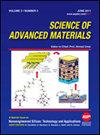Detergent-Compatible Amylases Produced by Fungal Species and Their Applications in Detergent Industry
IF 0.9
4区 材料科学
引用次数: 2
Abstract
Detergent enzymes are currently vital and important ingredients of modern powder and liquid detergents. They catalyze various biochemical processes intra-or extracellularly in the detergent industries. Microorganisms are the favored source of detergent compatible fungal amylases compared to plant or animal sources. Detergents cannot be produced in the developed countries without a mixture of detergent enzymes supplementation because they are essential components in the detergent industries. In countries under development, various produced detergents do not have enzymes. Amylases, proteases, pectinases, lipases, mannanases, and cellulases are generally the hydrolytic enzymes used in the detergent industries. They remove all soft, tough and stubborn starchy food, protein, pectin, fatty, mannane and cellulose-based stains attached to the various substrates like fabrics or glassware. A number of review articles on detergent-compatible bacterial and fungal enzymes exists, but none specifically covers detergent-compatible fungal amylases. In the present review, production and aspects of detergent fungal amylases are discussed with an emphasis on the stability of fungal amylases in the presence of detergent constituents. The article will help other worldwide research to study the properties of detergent pectinases and mannanases which are not extensively studied.真菌产生的洗涤剂相容性淀粉酶及其在洗涤剂工业中的应用
洗涤剂酶目前是现代粉末和液体洗涤剂的重要组成部分。在洗涤剂工业中,它们在细胞内或细胞外催化各种生化过程。与植物或动物来源相比,微生物是洗涤剂相容性真菌淀粉酶的首选来源。在发达国家,如果不补充洗涤剂酶的混合物,就无法生产洗涤剂,因为它们是洗涤剂行业的基本成分。在开发中的国家,生产的各种洗涤剂都不含酶。淀粉酶、蛋白酶、果胶酶、脂肪酶、甘露聚糖酶和纤维素酶通常是洗涤剂工业中使用的水解酶。它们可以去除附着在织物或玻璃器皿等各种基质上的所有柔软、坚韧和顽固的淀粉类食物、蛋白质、果胶、脂肪、甘露聚糖和纤维素污渍。存在许多关于洗涤剂相容性细菌和真菌酶的综述文章,但没有一篇专门涉及洗涤剂相容性真菌淀粉酶。本文综述了洗涤剂真菌淀粉酶的生产和方面,重点讨论了真菌淀粉酶在洗涤剂成分存在下的稳定性。这篇文章将有助于世界其他研究人员对未被广泛研究的洗涤剂果胶酶和甘露聚糖酶的性质进行研究。
本文章由计算机程序翻译,如有差异,请以英文原文为准。
求助全文
约1分钟内获得全文
求助全文
来源期刊

Science of Advanced Materials
NANOSCIENCE & NANOTECHNOLOGY-MATERIALS SCIENCE, MULTIDISCIPLINARY
自引率
11.10%
发文量
98
审稿时长
4.4 months
 求助内容:
求助内容: 应助结果提醒方式:
应助结果提醒方式:


